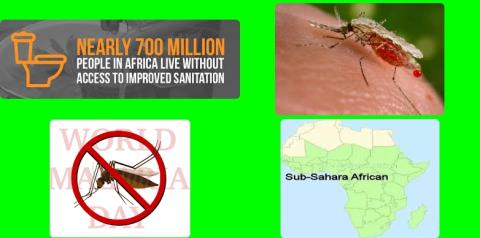
Objectives:
Current efforts for the prevention of malaria have resulted in notable reductions in the global malaria burden. However, they are not enough. Good hygiene is universally considered one of the most efficacious and straightforward measures to prevent disease transmission. Therefore, this review article has been conducted.
Do improved drinking water and sanitation (WS) conditions decrease risk of malaria infection?
Study design:
This review article included 49 eligible surveys comprising data for 247,440 individuals. Of the included individuals, 213,920 children aged 0-59 months were tested for malaria infection using microscopy, with a prevalence of 18.8%, whereas 59,988 (24.2%) positive cases were identified in 247,440 children by a malaria rapid diagnostic test (RDT).
Across all surveys, the average age of the children was 32.6 months and 50.2% were male.
The surveys were adjusted for age, gender, indoor residual spraying (IRS), insecticide-treated net (ITN) use, house quality and the mother's highest educational level.
Results and conclusions:
The investigators found in across all surveys, unprotected water was associated with an increased malaria risk of 17% [adjusted OR = 1.17, 95% CI = 1.07-1.27, p = 0.001] according to microscopy.
The investigators found in across all surveys, no facility users had an increased malaria risk of 35% [adjusted OR = 1.35, 95% CI = 1.24-1.47, p 0.001] according to microscopy.
The investigators found in across all surveys, piped water was associated with a decreased malaria risk of 48% [adjusted OR = 0.52, 95% CI = 0.45 -0.59, p 0.001] according to microscopy.
The investigators found in across all surveys, flush-toilet users had a decreased malaria risk of 49% [adjusted OR = 0.51, 95% CI = 0.43 -0.61, p 0.001] according to microscopy.
The investigators found the trends of individuals diagnosed by malaria rapid diagnostic test were consistent with those of individuals diagnosed by microscopy.
The investigators found in children with a “poor” socioeconomic status, no significant associations between unprotected water and flush toilets in relation to malaria infection, whereas in children with a “nonpoor” socioeconomic status, the associations between unimproved sanitation conditions (including unprotected water or no facilities) and the risk of malaria appeared to be pronounced.
The investigators concluded sanitation (WS) conditions are a vital risk factor for malaria infection among children (0-59 months) across sub-Saharan Africa (SSA) after adjustments for age, gender, IRS in the past 12 months and insecticide-treated use, house quality and mother’s highest educational level. Therefore, improved sanitation conditions should be considered a potential intervention for the prevention of malaria in the long term.
Original title:
Drinking water and sanitation conditions are associated with the risk of malaria among children under five years old in sub-Saharan Africa: A logistic regression model analysis of national survey data by Yang D, He Y, […], Liua Y.
Link:
https://www.ncbi.nlm.nih.gov/pmc/articles/PMC6796660/
Additional information of El Mondo:
Find more information/studies on malaria and food fortification/malnutrition right here.